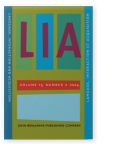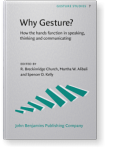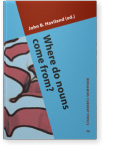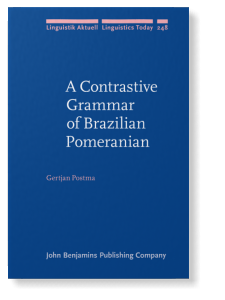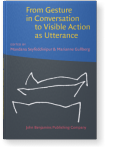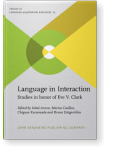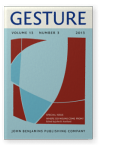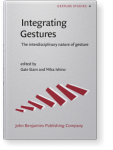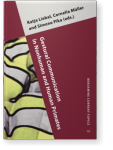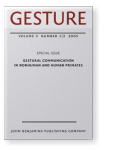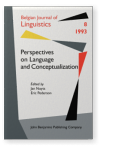Susan Goldin-Meadow
List of John Benjamins publications for which Susan Goldin-Meadow plays a role.
Journal
2017 The development of iconicity in children’s co-speech gesture and homesign The gesture–sign interface in language acquisition / L’interface geste–signe dans l’acquisition du langage, Morgenstern, Aliyah and Michèle Guidetti (eds.), pp. 42–68 | Article
Gesture can illustrate objects and events in the world by iconically reproducing elements of those objects and events. Children do not begin to express ideas iconically, however, until after they have begun to use conventional forms. In this paper, we investigate how children’s use of iconic… read more
2017 Chapter 18. So how does gesture function in speaking, communication, and thinking? Why Gesture?: How the hands function in speaking, thinking and communicating, Church, Ruth Breckinridge, Martha W. Alibali and Spencer D. Kelly (eds.), pp. 397–412 | Chapter
Abstract
This concluding chapter reflects on the book’s collected works that encapsulate, in the Aristotelian sense, gesture’s efficient causes (i.e., mechanisms that stimulate gesture) and its final causes (i.e., purposes that gesture serves). We conclude that gesture is… read more
2017 Chapter 17. Understanding gesture as representational action: A functional account of how action and gesture differ with respect to thinking and learning Why Gesture?: How the hands function in speaking, thinking and communicating, Church, Ruth Breckinridge, Martha W. Alibali and Spencer D. Kelly (eds.), pp. 381–396 | Chapter
Abstract
A great deal of attention has recently been paid to gesture and its effects on thinking and learning. This chapter sets forth a theoretical framework for exploring why gesture serves the functions that it does. The framework distinguishes gestures, which are… read more
2015 How handshape type can distinguish between nouns and verbs in homesign Where do nouns come from?, Haviland, John B. (ed.), pp. 111–133 | Article
All established languages, spoken or signed, make a distinction between nouns and verbs. Even a young sign language emerging within a family of deaf individuals has been found to mark the noun-verb distinction, and to use handshape type to do so. Here we ask whether handshape type is used to mark… read more
2014 Prosody in a communication system developed without a language model Sign Language & Linguistics 17:2, pp. 181–212 | Article
Prosody, the “music” of language, is an important aspect of all natural languages, spoken and signed. We ask here whether prosody is also robust across learning conditions. If a child were not exposed to a conventional language and had to construct his own communication system, would that system… read more
2014 Gesture in all its forms: Following in the footsteps of Adam Kendon From Gesture in Conversation to Visible Action as Utterance: Essays in honor of Adam Kendon, Seyfeddinipur, Mandana and Marianne Gullberg (eds.), pp. 289–308 | Article
Adam Kendon has contributed to every facet of gesture studies, from the co-speech gestures that occur with talk, to the silent gestures that replace talk. This chapter describes work I have done that follows in Adam’s footsteps. I first examine silent gesture in two groups: (1) children whose… read more
2014 How gesture helps children learn language Language in Interaction: Studies in honor of Eve V. Clark, Arnon, Inbal, Marisa Casillas, Chigusa Kurumada and Bruno Estigarribia (eds.), pp. 157–172 | Article
Children gesture before they begin to speak and continue gesturing throughout the language learning process. This chapter focuses on those gestures, and explores the role they play in language learning. We find that children’s early gestures not only precede, but also predict, the onset of a number… read more
2013 How handshape type can distinguish between nouns and verbs in homesign Where do nouns come from?, Haviland, John B. (ed.), pp. 354–376 | Article
All established languages, spoken or signed, make a distinction between nouns and verbs. Even a young sign language emerging within a family of deaf individuals has been found to mark the noun-verb distinction, and to use handshape type to do so. Here we ask whether handshape type is used to mark… read more
2011 Negation as structure building in a home sign system Pragmatics and Autolexical Grammar: In honor of Jerry Sadock, Yuasa, Etsuyo, Tista Bagchi and Katharine Beals (eds.), pp. 261–276 | Article
We identify a gestural marker for negation in a home sign system: a side-to-side headshake. This marker expresses a meaning that corresponds semantically to a function that applies to a sentence (whose semantic value is a proposition) and yields another, more complex sentence. Combining negation… read more
2011 Chapter 12. Is there an iconic gesture spurt at 26 months? Integrating Gestures: The interdisciplinary nature of gesture, Stam, Gale and Mika Ishino (eds.), pp. 163–174 | Chapter
Previous research has shown that children understand the iconicity of a gesture at 26 months. Here we ask when children begin to display an appreciation of iconicity in the gestures they produce. We observed spontaneous gesture in 40 children interacting with their parents from 14 to 34 months of… read more
2007 The two faces of gesture: Language and thought Gestural Communication in Nonhuman and Human Primates, Liebal, Katja, Cornelia Müller and Simone Pika (eds.), pp. 219–233 | Article
Gesture is typically produced with speech, forming a fully integrated system with that speech. However, under unusual circumstances, gesture can be produced completely on its own — without speech. In these instances, gesture takes over the full burden of communication usually shared by the two… read more
2007 3 Gesture with Speech and Without it Gesture and the Dynamic Dimension of Language: Essays in honor of David McNeill, Duncan, Susan D., Justine Cassell and Elena T. Levy (eds.), pp. 31–49 | Chapter
2005 The two faces of gesture: Language and thought Gestural Communication in Nonhuman and Human Primates, Liebal, Katja, Cornelia Müller and Simone Pika (eds.), pp. 241–257 | Article
Gesture is typically produced with speech, forming a fully integrated system with that speech. However, under unusual circumstances, gesture can be produced completely on its own — without speech. In these instances, gesture takes over the full burden of communication usually shared by the two… read more
2002 14. Getting a handle on language creation The Evolution of Language out of Pre-language, Givón, T. and Bertram F. Malle (eds.), pp. 343–374 | Chapter
1993 Language and Environment: A Cross-Cultural Study of the Gestural Communication Systems of Chinese and American Deaf Children Perspectives on Language and Conceptualization, Nuyts, Jan and Eric Pederson (eds.), pp. 167–185 | Article
